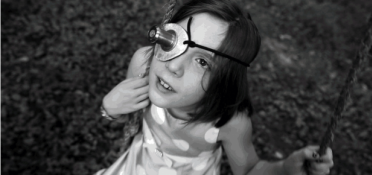CONTRIBUTOR’S NOTE
Often the temptation when working with animation is the too-faithful illustration of a text. As with film, there’s the tradition of storyboarding, which tends to nail down visual possibilities before they are fully explored, treats the text as primary, and can hardly help being linear. But in film or video, even when script-driven, there’s always a surplus of imagery—more than is required by the text—which enriches the viewer’s experience and creates a sense of depth. In animation nothing is on the screen but what is deliberately placed there, and so it’s not as easy to create nuance, or the sense of an incompletely known space. With current animation software you can create sequences which can then be fragmented, layered, scaled, converted to 3D, and explored by virtual camera. You have a freedom to experiment that was hardly possible in the past, so it’s easier to resist the impulse toward narrative efficiency.
“Soup Opera” was made in After Effects CS5.5. It’s a series of nested layered compositions. I began with the dragons. Their bodies are type on paths: by changing the right margin over time, a line of type can be pulled along a complex, curving path. I wanted to create a fluid undersoup environment for them, so I began with a slightly textured oversized background that moves slowly and continuously throughout the video. Above this layer is a shifting abstract wave pattern. Then comes the transparent type intermittently sinking and vanishing in the background; I built this using a preset 3D-type animation but changed the parameters so that the type would move continuously until it disappeared, rather than settling into legibility. Finally, the seaweed was built out of simple shapes with warp distortions applied over time, in a series of layers so that the dragons and the swimmer could seem to pass through it.
I originally wanted the soundtrack to be built up using elements of the text and nothing else. Most of the sound is my voice with distortions applied. Other layers were created by feeding fragments of the poem into the P22 music generator (an online tool that creates midi files based on input text) and then applying instrument effects, mainly tuned drums. In the end I cheated and added some prerecorded clanging.



